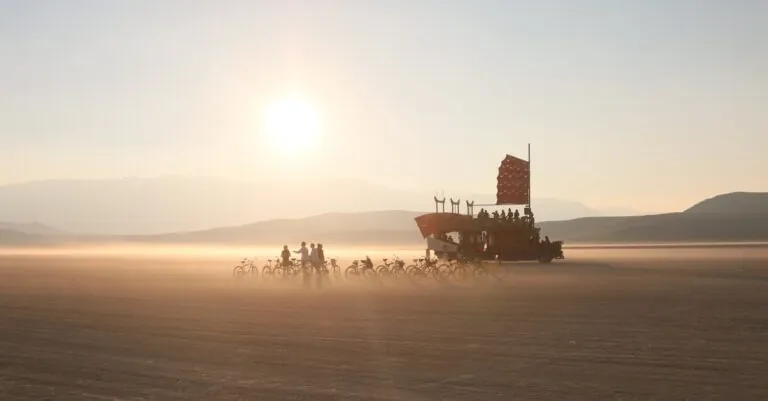Backpacking can feel like a game of Tetris, where every ounce counts and the stakes are high. Imagine setting off on a grand adventure only to find yourself lugging around a backpack that feels heavier than a small car. It’s time to lighten the load and embrace the freedom of a well-packed bag.
Table of Contents
ToggleBackpacking Weight Tips Overview
Minimizing weight in a backpack significantly enhances the travel experience. Focus on essential gear only, which often includes a lightweight tent, sleeping bag, and stove. Prioritize multi-use items, as these serve more than one purpose, reducing overall weight.
Evaluate each item in the pack for necessity. Consider food choices, opting for lightweight, high-calorie options, such as dehydrated meals or energy bars. Utilize vacuum-sealed bags for food storage, as this reduces space and weight.
Choose materials wisely. Opt for gear made from lightweight fabrics like nylon or polyester, which maintain durability while minimizing bulk. Evaluate the weight of each piece of equipment, as even small differences can accumulate.
Organize the load effectively. Distributing weight evenly across the backpack improves balance and comfort during hikes. Position heavier items closer to the back, which provides better stability and reduces strain on the body.
Practice packing techniques beforehand. Try different packing arrangements to find the most efficient setup for personal comfort. Regularly reassess the backpack contents before trips, as preferences and needs might change over time.
Utilize a scale to monitor the total weight of the pack. Keeping the weight under a specific threshold, typically around 20 to 30 percent of body weight, ensures manageable carrying and less fatigue during hikes. Make changes based on specific hike lengths and terrain types, as these factors impact necessary supplies.
Importance of Weight Management
Weight management is crucial for any backpacking trip. Efficiently packing light enhances comfort and accessibility during hikes.
Benefits of Reducing Pack Weight
Reducing pack weight leads to multiple advantages. Lighter backpacks reduce strain on the body, allowing for improved stamina and endurance. Enhanced mobility becomes apparent as travelers can navigate challenging terrain with ease. Less weight also allows for greater flexibility in choosing trails and hiking speeds. Carrying only essentials means individuals can prioritize multi-use gear, which simplifies packing while maintaining versatility.
Impact on Hiking Experience
A lighter pack significantly improves the overall hiking experience. Freedom of movement increases, leading to more enjoyable adventures. Concerning energy levels, reduced weight contributes to stamina preservation throughout long hikes, making strenuous climbs feel less daunting. Enjoyment of scenery often increases when physical fatigue decreases. Handling gear becomes simpler with a lighter load, allowing for easy access to necessary items like food and tools during breaks.
Essential Lightweight Gear
Efficient packing involves selecting gear that balances functionality and weight. The right equipment enhances comfort while minimizing strain during hikes.
Selecting the Right Backpack
A properly fitted backpack holds the key to effective weight distribution. Seek lightweight models with supportive frames to ensure comfort. Check for features like adjustable straps and hip belts, which help in stabilizing the load. Consider capacity; a backpack ranging from 50 to 70 liters suits most extended trips while smaller options work for day hikes. Look for additional compartments or pockets to keep items organized and easily accessible.
Lightweight Tent and Sleeping System
Opting for a lightweight tent can significantly reduce overall pack weight. Models weighing under 5 pounds accommodate two people without sacrificing space or durability. Choose a sleeping bag rated for the appropriate temperature with a weight below 3 pounds. Inflatable sleeping pads offer comfort while being lightweight and compact. Prioritize tents made from high-quality, waterproof materials to ensure protection without added bulk.
Cooking and Food Solutions
Lightweight cooking equipment simplifies meal prep on the trail. Consider a compact stove weighing under 1 pound to conserve space and reduce load. Pot sets made from titanium or aluminum provide durability without excess weight. Choose dehydrated meals or high-calorie snacks, such as nut butter and energy bars. Vacuum-sealed food bags help save space and protect items from moisture, making meal management efficient and easy during the trip.
Packing Techniques for Weight Savings
Effective packing techniques play a crucial role in achieving weight savings during backpacking trips. Applying specific strategies can enhance overall efficiency and comfort.
Leave No Trace Principles
Adhering to Leave No Trace principles significantly contributes to responsible packing. Packing out trash, food scraps, and gear ensures minimal environmental impact. Choosing biodegradable soaps and packing all supplies in reusable containers helps reduce waste. Following these guidelines promotes a sustainable approach, allowing nature to remain pristine for future adventurers.
Organizing Gear Efficiently
Organizing gear efficiently maximizes space and simplifies access. Utilizing packing cubes can separate items by category, reducing clutter. Keeping frequently-used items accessible ensures ease during breaks. Distributing weight evenly throughout the backpack enhances stability, allowing for smooth navigation on trails. Implementing color-coded systems for gear categories helps identify items quickly, further streamlining the packing process. Overall, efficient organization not only saves weight but also enhances the overall backpacking experience.
Clothing Considerations
Clothing choices significantly impact backpacking weight and comfort. Prioritizing lightweight and functional apparel enhances the overall hiking experience.
Layering for Versatility
Layering clothes provides flexibility in changing weather. Start with a moisture-wicking base layer to keep dry, add an insulating mid-layer for warmth, and finish with a lightweight, waterproof shell to protect from elements. Choose fabrics that dry quickly and allow for easy packing. This combination facilitates adjusting for temperature fluctuations while keeping the pack light. Don’t forget to include an extra layer for unforeseen weather conditions. Each layer should serve a purpose, contributing to effective heat retention without adding unnecessary bulk.
Choosing Lightweight Fabrics
Selecting lightweight fabrics plays a pivotal role in reducing pack weight. Look for materials such as nylon, polyester, or merino wool, which offer durability without excessive weight. These fabrics should be breathable and quick-drying, enhancing comfort during strenuous activities. Opting for multi-use items like a shirt that works for both hiking and lounging conserves space. Choosing lightweight pants adds versatility, enabling comfortable movement. Evaluate the weight of each item carefully, as small changes in fabric can lead to significant differences in overall pack weight. Prioritize functionality while maintaining lightness for a better backpacking experience.
Backpacking should be an adventure filled with exploration and enjoyment. By focusing on weight management and smart packing techniques, hikers can transform their experiences. A lighter pack not only enhances mobility but also minimizes strain, allowing for longer and more enjoyable treks.
Prioritizing essential gear and choosing multi-use items can significantly reduce weight. Thoughtful clothing selections and efficient organization further contribute to a comfortable journey.
Ultimately, the right approach to packing can lead to unforgettable outdoor experiences. Embracing these backpacking weight tips empowers adventurers to navigate trails with ease and confidence.






